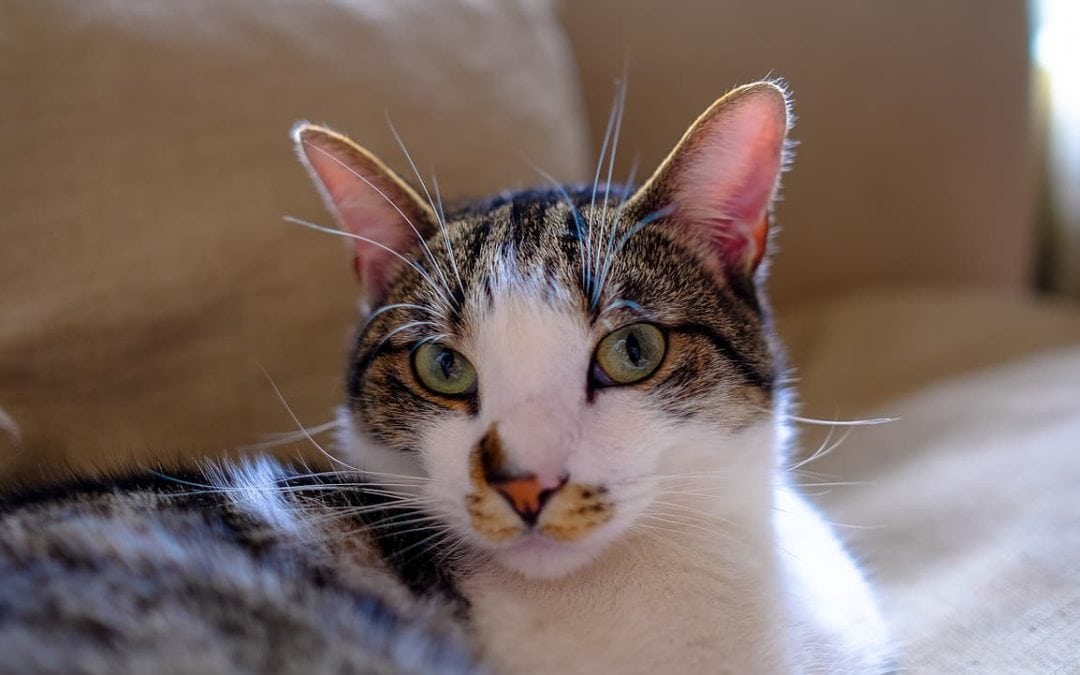In veterinary medicine, we have to treat many species. There are too many variations and too many species to learn each species separately. Veterinarians are taught what the similarities or differences are so all of the knowledge can be stored to use. After all nerve impulses travel along nerves to synapses in all mammals and all vertebrates. So we can generalize about nerve damage and repair prospects. However, there are some distinct species differences. While low doses of Tylenol are not toxic to dogs, a tenth of a tablet is enough to kill a strong, healthy intact male cat. (Meanwhile, cats are not nearly as affected by xylitol or grapes as dogs are.)
Cats are not little dogs.
Although some dogs react to some over the counter flea medicines, some cats are especially sensitive. Ectoparasite products designed for dogs can be fatal when used on cats.
Cats are not little dogs.
In the 1970’s, the best insecticides were organophosphates and carbamates. Organophosphates include the Insecticides – Malathion, parathion, diazinon, fenthion, dichlorvos, chlorpyrifos, ethion; nerve gases – Soman, sarin, tabun, VX; ophthalmic agents – Echothiophate, isoflurophate; antihelmintics – Trichlorfon; and, herbicides – Tribufos (DEF), merphos.
Carbamate insecticides have a special carbamate ester functional group. They include aldicarb (Temik), carbofuran (Furadan), carbaryl (Sevin), ethienocarb, fenobucarb, oxamyl, and methomyl.
Both organophosphates (or OP’s) and carbamates work by disrupting the normal nervous system function. An excess of the neurotransmitter, acetylcholine, accumulates in the body. While some acetylcholine is a necessary for normal neuromuscular function, an excess causes severe clinical signs and even death. Other signs include drooling, tearing, excessive urination, diarrhea, muscle twitching, weakness, difficult breathing and collapse.
Cats are not little dogs.
In the late 1980’s, pyrethrins were introduced. Relatively speaking at the time, they were safer insecticides and derivatives of from the Chrysanthemum family which includes mums and marigolds. They smelled nice and were a more “natural” product. As insects built up resistance, artificial chemical analogs were developed. Pyrethrin, Permethrin, and other Pyrethroids are found in many over-the-counter types of flea, tick, and insect control products. (Veterinarians typically stock newer safer products.) The active ingredient names include pyrethrin, etofenprox, allethrin, resmethrin, sumethrin, fenvalerate, and permethrin under the name brands include Adams, Bio Spot, Duocide, Happy Jack, Hartz, K9 Advantix, Mycodex, Ovitrol, Proticall, Raid, and Zodiac. These products are available as collars, sprays, shampoos, foams, and spot ons.
While the longer lasting synthetic varieties were more effective, they were also more toxic. Instead of just killing the insects and ticks, they affected the nervous system of pets. Smaller dogs (because of the high skin to weight ratio) and many cats get very sick with these products.
Cats are not little dogs.
DO NOT use permethrins on cats and DO NOT use any product on a cat unless it is specifically made for cats.
But another problem is that these products don’t work as well as they used to. Therefore, people use them more frequently or at a higher dose. Not only is this more expensive, but there is more exposure and therefore more toxic effects. The signs are similar to the OP toxicity. The most common signs are excessive salivation, tremors, twitching, lack of appetite, vomiting, diarrhea, incoordination, hyperactivity, disorientation, vocalization, depression, difficulty breathing, and seizures and death.
Cats are not little dogs. Cats process these even worse than dogs. If they get into topical flea medicines it is important to thoroughly and completely bathe the animal in a degreasing soap. We will worry about the skin problems if the pet survives. Pets that eat the toxin should vomit unless it includes petroleum distillates. At this point, you need to be at your vet. (Bring in the container, if possible, so we can see what specific poison is involved.) OP’s have an antidote. OP’s and pyrethrins will be treated with supportive care. Even so, the prognosis is only fair to good and some of these patients die.
Cats are not little dogs.
Which is why we have a young kitten-cat on IV fluids and supportive care. The two large dogs did fine with the permethrin dip the three shared. Within four hours, Popeye was tremoring, drooling, vomiting, and diarrhea. He showed signs of incoordination, hyperactivity, disorientation, vocalization, depression, difficulty breathing, and seizures. Because he is a cat, we see ear flicking, paw shaking, and contractions/twitching of the skin. Unfortunately, death is still possible.
Cats are not little dogs.
DO NOT use permethrins on cats and DO NOT use any product on a cat unless it is specifically made for cats. Popeye was tremoring within four hours. After a bath at home, he was still bad enough to go to the Animal ER. Even with treatment and IV fluids, he is still having seizure like activity and was transferred to us for continued care. His owners love him dearly.
What seemed like a good idea was not.
Seems cats are not little dogs. Popeye’s parents would like everyone to know that. And for everyone to avoid what they are going though.
Cats are not little dogs.
Dr. MJ Wixsom owns and practices at Guardian Animal Medical Center on Bellefonte Road in Flatwoods, KY. 606.928.6566 and online at www.GuardianAnimal.com and has her fourth book out.

